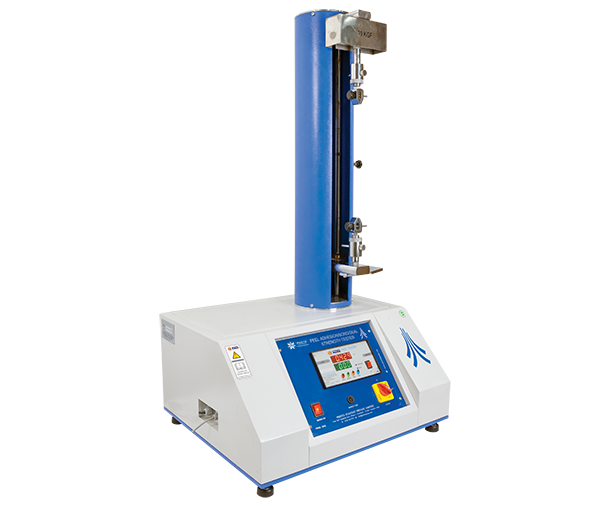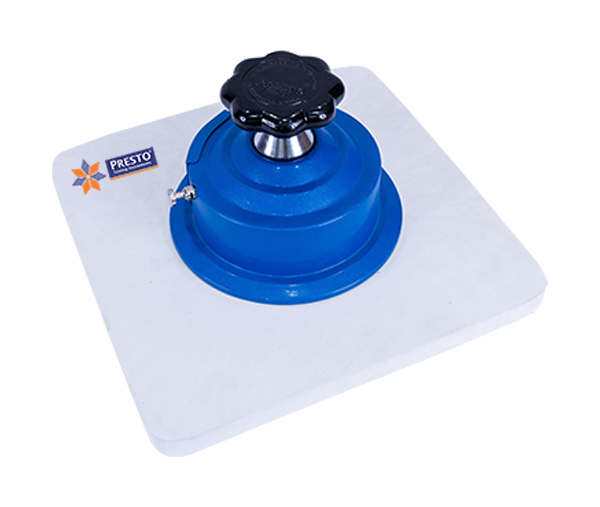
Tensile Testing Machine – Digital Model
4.9 out of 5
Availability: In Stock
Shipping location: All over the world
Brand: Testing Instruments
Tensile s..read more
To conduct the tensile strength test, you should prepare the specimen first. For this take a sample strip from the material you want to test. You can place it on the dumbbell cutting die. Cut the specimen from the sample strip as stated in the test standard for that material. You can prepare the rectangular sample as well by cutting the strip of 25 mm width and appropriate length. Now mark the specimen strip as follows. Marking should be done in such a way that the distance between the grips of the machine is 100 mm after clamping of the specimen. This distance can vary between different test standards. You can mark the specimen at a distance of 25 mm from both ends to ensure proper and equal clamping force on the specimen on both ends.
Once you are done with the preparation of the testing sample, then you need to start the machine. For this, you can plug the machine into a 5 amp, 220 Volts AC. Turn the machine ON with the switch in the control panel.
After that, you need to place the sample on the upper side of the specimen between the upper fixed grips and tighten the grip firmly. Now bring the lower movable grip upwards so that the specimen can easily reach the grips. Ensure that the lower limit switch ring is placed at a position that keeps a minimum distance of 25 mm. Now place the lower end of the specimen between the lower grips and tighten the grip firmly. Make sure that the specimen is placed in the center of the grips. Once you followed all these steps, you can successfully commence the test. In this way, you can easily test the tensile strength of the specimen.
Features of Tensile Testing Machine – Digital Model
- High testing range
- Vice-type clamping grips for firm gripping of the test specimen.
- Advanced peak load indicator for accurate readout and storage of test results.
- Limit switches protection for the protection of grips and the machine.
- Strong load frame.
- Safety limit switches incorporated for both the upward and the downward directions.
- Completely hardened and nickel-plated center load bearing screw provided for longer, rugged life.
- Aesthetically designed using heavy Metal channels covering the side rods.
- Minimum maintenance requirements and low wear and tear of parts.
- Displays all operational data - The software window displays all operational data e.g. force, elongation, strain, and percentage elongation.
- Memory function - Test data may be displayed, saved for future reference, or printed for reports, certification, and presentations.
- Simple operation - Test parameters are easily set through simple key & point & click entry with the mouse.
Technical specifications
- Load Cell Capacity: 10000 kgf
- Test Speed Range with Speed drive (optional): 50 - 500mm/min
- Load Monitoring: Peak Load indicator with digital readout and peak hold feature
- Load Sensor S-type Load Cell
- Clamping mechanism: Vice type clamping Grips
- Load accuracy: ±3% full scale (with master load)
- Elongation: ±3% full scale
- Least count: 10 Kg
- Load Cell Overload safety: <80% of the total load
- Drive Mechanism: Variable Frequency Drive Mechanism
- Safety Feature: Up and down fixed and movable limit switch rings
- Over Load relay contact rating: Potential free relay 5 Amp. 220 V AC single phase
- Earthing Required: Proper Earthing required corresponding not more than 4 V AC with respect to neutral.
- Motor Capacity: 5 HP
- Gear Box Ratio: 7.5:1
Related Products
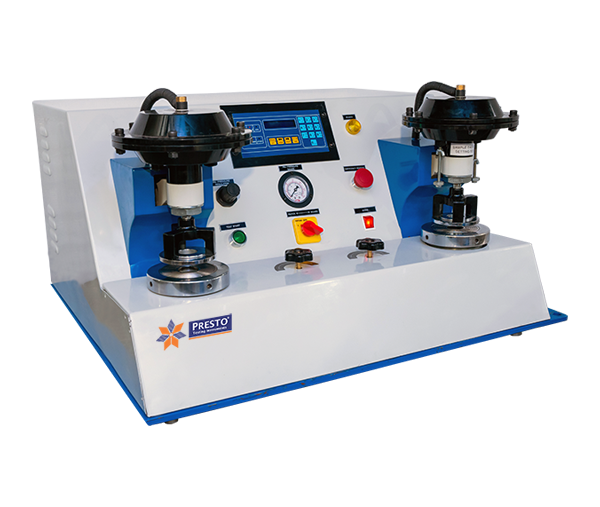
Bursting Dual Head for Paper and Board
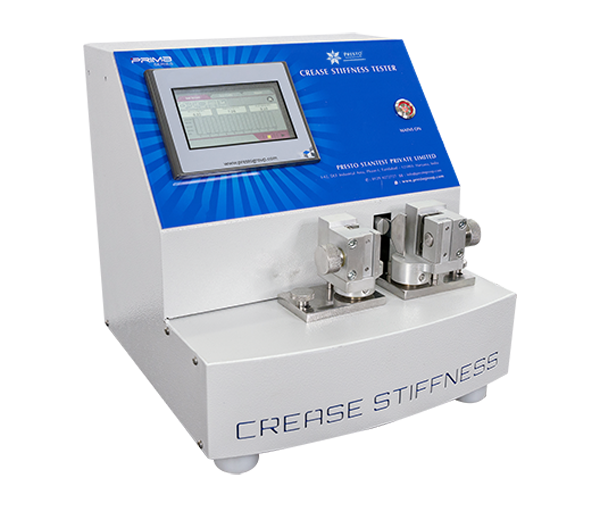
Crease Stiffness Tester Prima Model

Laboratory Heat Sealer – (300mm)
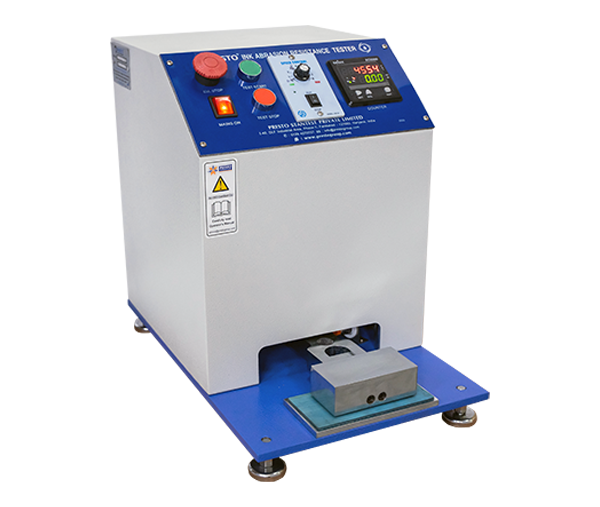
Ink Abrasion Resistance Tester

For More details & Information
Please fill this form
Tensile Testing Machine – Digital Model
4.9 out of 5
Availability: In Stock
Shipping location: All over the world
Brand: Testing Instruments
Tensile strength is one of the most important properties that are used for quality analysis. The tensile tester is an instrument that helps you to measure the force required to break a sample. If you want to perform a tensile test on your products, then it becomes necessary for you to buy good testing equipment. We at Presto offer the best quality testing instrument from over 25+ years. One of our most effective testing instruments is Tensile strength tester. This testing instrument is best for determining the tensile strength of materials. Tensile testers are used in quality control labs, production lines, and R&D facilities to test tensile strength, elongation, hardness, and other material properties. When you need a tensile tester for your lab or production line, there's only one choice i.e. Tensile Testing Machine (Cap. : 10000 kgf.) Digital Model no. ADTTM 10000. The instrument is best for quality analysis of materials and products in QC labs as well as mainstream production chains. This testing instrument comes with no slippage grips for firm clamping of the test specimen. The machine is computer operated and is used to check the physical properties of the material. It is the vertical type with the upper gripping jaw attached to a measuring load cell, while the lower jaw is attached to the top of the force exerting lead screw. The tester offers a host of software features that allows operational control and real-time display of the ongoing test.
The main purpose of this amazing testing instrument is to study the tensile properties of various materials. The instrument is meant for creating high tensile forces that are further used for various testing and analysis. The instrument is provided with a limit switch which acts as a safety feature for the machine and limits the movement of grips of the machine. The out body is fabricated with mild steel which is duly powder coated. There is a digital peak load indicator provided with the instrument for a digital readout of the test results. Our products include all types of standard and custom-built machines depending on the needs and requirements of our clients. We offer an extensive range of models in this testing instrument.
The tensile strength testing machine will help to find out various important qualities of the materials including tensile strength, Young’s Modulus, tensile strain, elongation in the test specimen with percent elongation at yield, and elongation in the specimen with percent elongation at breaking point or point of failure. With the help of these quantities, the manufacturers can make proper improvements in the properties of the material to ensure that they deliver the best quality to the clients.
To conduct the tensile strength test, you should prepare the specimen first. For this take a sample strip from the material you want to test. You can place it on the dumbbell cutting die. Cut the specimen from the sample strip as stated in the test standard for that material. You can prepare the rectangular sample as well by cutting the strip of 25 mm width and appropriate length. Now mark the specimen strip as follows. Marking should be done in such a way that the distance between the grips of the machine is 100 mm after clamping of the specimen. This distance can vary between different test standards. You can mark the specimen at a distance of 25 mm from both ends to ensure proper and equal clamping force on the specimen on both ends.
Once you are done with the preparation of the testing sample, then you need to start the machine. For this, you can plug the machine into a 5 amp, 220 Volts AC. Turn the machine ON with the switch in the control panel.
After that, you need to place the sample on the upper side of the specimen between the upper fixed grips and tighten the grip firmly. Now bring the lower movable grip upwards so that the specimen can easily reach the grips. Ensure that the lower limit switch ring is placed at a position that keeps a minimum distance of 25 mm. Now place the lower end of the specimen between the lower grips and tighten the grip firmly. Make sure that the specimen is placed in the center of the grips. Once you followed all these steps, you can successfully commence the test. In this way, you can easily test the tensile strength of the specimen.
Features of Tensile Testing Machine – Digital Model
- High testing range
- Vice-type clamping grips for firm gripping of the test specimen.
- Advanced peak load indicator for accurate readout and storage of test results.
- Limit switches protection for the protection of grips and the machine.
- Strong load frame.
- Safety limit switches incorporated for both the upward and the downward directions.
- Completely hardened and nickel-plated center load bearing screw provided for longer, rugged life.
- Aesthetically designed using heavy Metal channels covering the side rods.
- Minimum maintenance requirements and low wear and tear of parts.
- Displays all operational data - The software window displays all operational data e.g. force, elongation, strain, and percentage elongation.
- Memory function - Test data may be displayed, saved for future reference, or printed for reports, certification, and presentations.
- Simple operation - Test parameters are easily set through simple key & point & click entry with the mouse.
Technical specifications
- Load Cell Capacity: 10000 kgf
- Test Speed Range with Speed drive (optional): 50 - 500mm/min
- Load Monitoring: Peak Load indicator with digital readout and peak hold feature
- Load Sensor S-type Load Cell
- Clamping mechanism: Vice type clamping Grips
- Load accuracy: ±3% full scale (with master load)
- Elongation: ±3% full scale
- Least count: 10 Kg
- Load Cell Overload safety: <80% of the total load
- Drive Mechanism: Variable Frequency Drive Mechanism
- Safety Feature: Up and down fixed and movable limit switch rings
- Over Load relay contact rating: Potential free relay 5 Amp. 220 V AC single phase
- Earthing Required: Proper Earthing required corresponding not more than 4 V AC with respect to neutral.
- Motor Capacity: 5 HP
- Gear Box Ratio: 7.5:1



